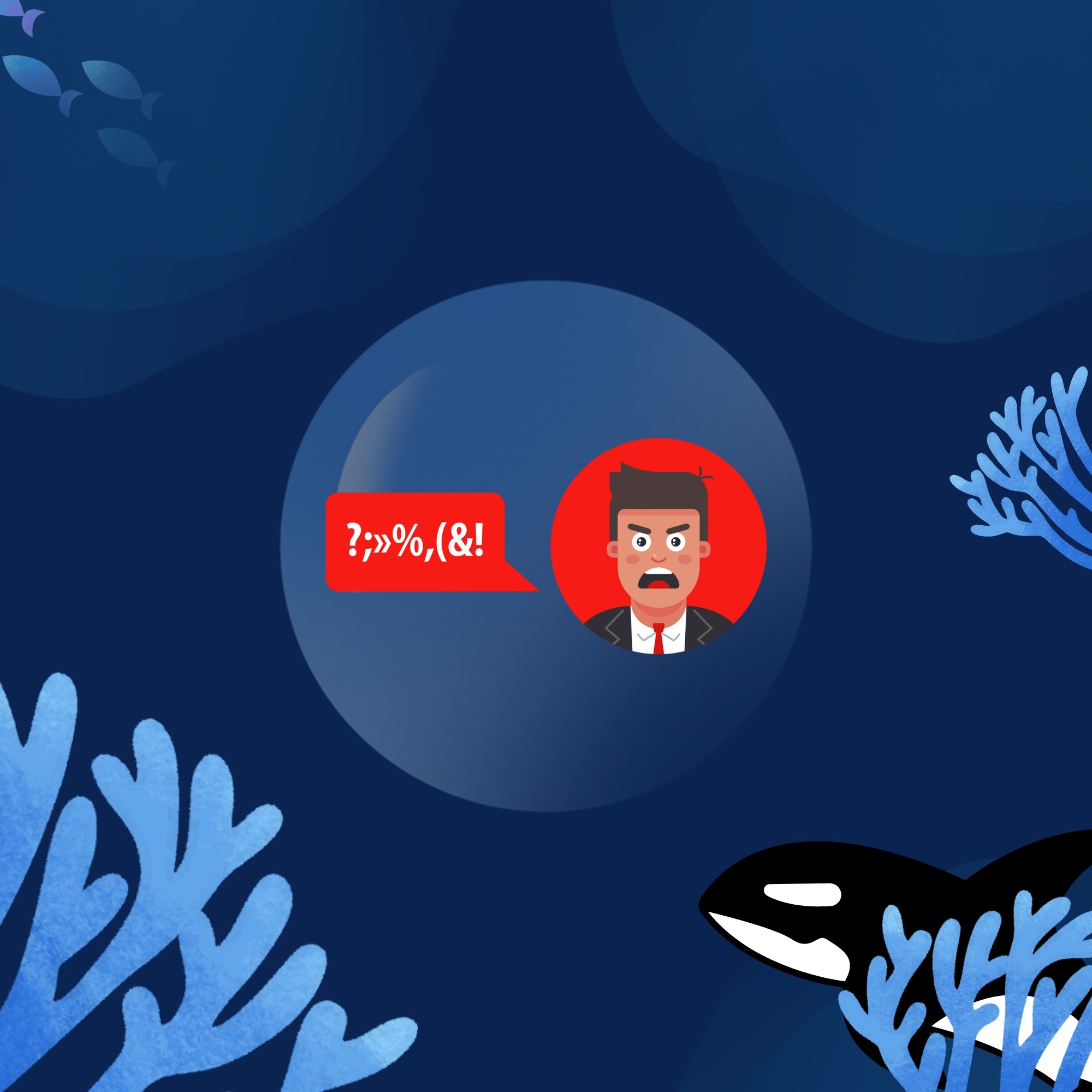How to Handle the 7 Types of Difficult Customers
Master customer service with our guide on handling difficult customers and boosting your business success.

Charles Password
May 6, 2024
Dealing with difficult customers can be challenging, but it's essential for maintaining a successful business. Here's a straightforward playbook to help you understand what the 7 types of difficult customers are and how to handle each.
This article contains:
Why Understanding Your Customers' Type Matters
How does Empathy, Active Listening, and Documentation lead to great customer service
7 Types of Difficult Customers and How to Handle Them
The Impatient Shopper
The Angry or Rude Customer
The Demanding Customer
The Indecisive Customer
The Complainer
The Price Sensitive Customer
The Unresponsive Customer
Why Understanding Your Customers Types Matters
From the impatient shopper to the indecisive client, difficult customers come in all forms, and their impact on your business can be profound. A single bad experience can drive customers away and Zendesk's Customer Experience Trends Report 2020 found that 50% of customers will switch to a competitor after just one bad experience. That's a significant impact on your bottom line.
In this article, I will go into the psychology of difficult customers, explore various types of challenging interactions, and provide you with effective examples for managing these situations
How does Empathy, Active Listening, and Documentation Lead To Great Customer service
Empathy and active listening are vital components of effective customer service. They involve validating the customer's feelings and genuinely seeking to understand their perspective. Documentation, on the other hand, ensures that there is a record of the interaction, which is invaluable for resolving the current issue and preventing future ones. These are the three pillars which hold up the quality of my support. I found it incredibly easy to deal with all types of difficult customers and in the next sections i will show you how.
7 Types of Difficult Customers and How to Handle Them
In the world of customer support, you will encounter a variety of challenging personalities. Understanding these types is crucial for tailoring your approach to each unique situation.
The Impatient Shopper
Who are these?
These are the customers who usually don't want to be mean but really just have to get on with there day. I highly value my time which means i should do the same for others. This is why when i sense urgency in someone i do my very best to get things resolved immediately or make sure they know it will take a time to resolve the issue.
😥 "Why is this taking so long? It’s a live chat hurry up guys" 😥
How to Handle:
Acknowledge the Delay: Apologize sincerely for the wait and explain why you were late. You’re a human being. Act like one. Talk as if you were a regular person, NOT a company.
Provide Updates: Keep them informed about the progress.
Be Efficient: Streamline your responses and aim to resolve their issue swiftly.
Ask for their email in case you can’t reply straight away
Example:
"Hi [Customer], I apologize for the delay as I was driving and didn’t want to crash* haha. I’m working on your request and should have an update for you in the next 20min. Thank you for your patience. May I know the best email to reach you if it ever takes more than 20min as I don’t want to keep you connected there."
*alternative : I’m sorry I was talking care of my kids earlier / I’m sorry for the delay, my internet went Off and I had no access to my live chat anymore / I’m sorry I was helping a colleague who had some trouble on another conversation but now no worries, I’m here to help you.
The Angry or Rude Customer
Who are these?
Angry or rude customers can be the most intimidating. They often require a calm and composed approach. The Harvard Business Review suggests that the first step is to simply listen without interrupting, which can help diffuse anger and lead to a more constructive conversation. You getting upset with the customer because they are upset will make the situation 10x worse and bring the possibility of a bad review to the table.. AVOID this at all costs.
😥 "This is unacceptable!" 😥
How to Handle:
Stay Calm: Don’t take it personally and keep your composure.
Let them know they’re talking to a human being, not to a company
Listen Actively: Let them vent without interrupting.
Apologize and Resolve: Apologize sincerely and offer a solution.
Let them know they’ll help you
Example:
"I’m sorry to hear about your experience, [Customer]. Btw nice to meet you, I'm Leo, the app founder and rest assured I’ll be here to personally resolve this matter. Let’s work together to resolve this. Could you provide more details so I can assist you better? Again, i’m sorry since I work 16h per day on this and I wish it was perfect but thanks to you, i might be able to make my product a better one"
The Demanding Customer
Who are these?
This customer expects immediate and high level service. I managed these encounters by setting realistic expectations and delivering on promises. These are the types of customers who prefer to save time and would get frustrated whenever i took more than 3 minutes to figure something out.
😥 "I need this done now!" 😥
How to Handle:
Set Realistic Expectations: Be clear about what you can and cannot do.
Let them know you’re a human being, not a big company
Deliver Promptly: Meet their needs as efficiently as possible.
Communicate Clearly: Keep them informed about the process and timelines.
Ask for their email
Example:
"Hi [Customer], I understand the urgency. I’ll do my best to expedite this, and you can expect an update within the next [timeframe]. Btw nice to meet you, I'm Leo, the app founder and rest assured I’ll be here to personally resolve this matter. May I know the best email to reach you if it ever takes more than 20min as I don’t want to keep you connected there while I work on it?"
The Indecisive Customer
Who are these?
Indecisive customers need help to make choices and may require extra guidance. Patience and clear communication are key. A Brax article on market psychology suggests that more options lead to fewer sales because of the increased chance of "second-guessing" oneself due to "Choice Overload."
😥 "I’m not sure which option is best." 😥
How to Handle:
Simplify Choices: Limit options to reduce decision fatigue.
Provide Clear Recommendations: Suggest the best option based on their needs.
Reassure: Reinforce the benefits of their choice to build confidence.
Example:
"Hi [Customer], based on your requirements, I recommend [Option A]. It’s the best fit for your needs because [specific reason]. Would you like to proceed with this? If so I’ll explain you how to do it"

The Complainer
Who are these?
The complainer may have genuine issues or enjoy the act of complaining. Either way, addressing their concerns with sincerity is vital. Understand that they are paying to have a fully functional app, so patience is crucial when dealing with these types of customers.
😥 "This never works right!" 😥
How to Handle:
Empathize: Show that you understand their frustration.
Address the Issue: Offer a practical solution or workaround.
Follow Up: Ensure the issue is resolved to their satisfaction.
Let them know you’re only a human being
Ask for their email
Example:
"Hi [Customer], I’m sorry for the inconvenience. Let’s see how we can fix this. Can you provide more details about the issue? Btw nice to meet you, I'm Leo, the app founder and rest assured I’ll be here to personally resolve this matter. On a side note, may I know the best email to reach you if it ever takes more than 20min as I don’t want to keep you connected there while I work on it?"
The Price-Sensitive Customer
Who are these?
Price-sensitive customers are always looking for a deal and can question the value of your products or services. Demonstrating the value and quality of your offerings can help justify the price. I found that giving clear and believable explanations for the price increase was the best way to go about these encounters.
😥 "Isn’t this too expensive?" 😥
How to Handle:
Highlight Value: Emphasize the benefits and quality of your product/service.
Offer Alternatives: Suggest more budget-friendly options if available.
Justify Pricing: Explain the reasons behind the cost, like quality or unique features.
Example:
"Hi [Customer], I understand your concern. Our product/service includes [specific benefits], which ensures great value for your money. We also have [alternative option] that might fit your budget better."
The Unresponsive Customer
Who are these?
These are usually the customers who are shy to tell us that they don't understand. We found it crucial to maintaining a clear and open communication with these types of customers.
😥 "…" 😥
How to Handle:
Reach Out: Send a follow-up message to encourage a response.
Be Patient: Give them time to respond while remaining available.
Provide Clear Instructions: Make it easy for them to engage.
Example:
"Hi [Customer], just checking in to see if you need any further assistance with your issue. Please let me know how I can help."
Summary of customer types and how to deal with them:
The Angry Customer: Listen without interrupting to de-escalate anger.
The Demanding Customer: Set realistic expectations and deliver on promises.
The Indecisive Customer: Provide fewer options to ease decision-making.
The Complainer: Address concerns sincerely to retain customers.
The Price-Sensitive Customer: Justify value over price.
The Unresponsive Customer: Encourage communication to understand their needs.
Conclusion
Handling difficult customers effectively can transform potential conflicts into opportunities for customer delight. Remember:
First and furthermost, let them know you’re a human. People will forgive you if you’re a human being. They won’t forgive/give you some slack if you talk like
a big company
Active Listening: Understand their concerns fully before responding.
Empathy: Show genuine care for their situation.
Clear Communication: Keep your messages concise and informative.
Follow Up: Ensure issues are fully resolved and customers are satisfied.
Every interaction is a chance to build loyalty and improve your service. Embrace these challenges, learn from them, and continually refine your approach. A satisfied customer is the best business strategy of all.
Bonus : How to handle insulting customers
Alt 1 : If someone really is an asshole I sometimes have fun with them saying something like “This is an automatic message : an insult has been detected and the last message has been deleted. If this happens again, the live chat will automatically ban you without warning the team running the customer service.
Alt 2 : I just hit the “block” button on the livechat so if something bad happens, I can always blame my livechat
Charles Password
Penida CEO
Solopreneur co-founded a top Shopify apps studio with over 42k users—An innovator with a knack for engaging e-commerce solutions.
